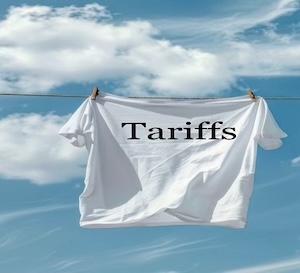By Victoria Holmes, Braumiller Law Group
Liberation Day passed with the promised reciprocal tariffs touted by the Trump administration. The president, surrounded by workers in the Rose Garden on April 2, executed a number of tariffs promising to Make America Wealthy Again. How did they calculate these tariffs? Well, there’s speculation. The Cato Institute, a libertarian think tank, claims “that the rate calculation is barely more sophisticated than dividing the bilateral trade deficit between the United States and each trading partner by the quantity of goods imported into the United States, and then (completely at random) further dividing it by 2.” The White House did respond that there was much more to these calculations, but no serious economist would pass these tariffs as a legitimate tactic for making America wealthy, so we can view their argument without giving it much weight. Also, for some reason, we’re at a trade war with penguins.
Let’s take a look at how these tariffs will affect supply chains. First, supply chains are the processes through which raw materials become manufactured goods. Sometimes, a product passes through several countries before it’s eventually available to the consumer. In a trade war, imports and exports influence the prices of finished goods—and that cost is ultimately passed down to the consumer. How does this affect you? Well, go into your closet and pick out a sweater. Does it say “Made in Vietnam”? Or “Made in Indonesia”? That’s because, if you’re in the U.S., there aren’t many factories that produce clothing domestically. The prices of your clothes will go up.
Clothes aren’t the only items that will go up. Because President Trump gave tariffs to about 90 percent of nations, almost any item you have bought in the past could experience a price hike. It will take about a month or two to see the full extent of price changes, but produce and items from China could see a significant rise more quickly. The price of cars will definitely go up. Former Ford CEO spoke to CNN saying it’s just “simple math.” Bank of America estimates that a 25% tariff on all imported auto parts would increase the cost of US assembled vehicles by about $3,285 per vehicle on average.
One major company that will feel the sting of supply chain disruptions is Apple. They remodeled their processes from partnerships with China, moving to make their goods in countries like Malaysia, Vietnam, and India. But, Trump’s tariffs on those countries nulls the strategy around breaking ties with Chinese manufacturers. Many technology stocks are tanking after April 2, meaning that previously cheap products like TVs will become more expensive.
Small businesses are especially vulnerable to tariff hikes and supply chain disruptions, like those proposed under the Trump administration. Many small retailers and manufacturers rely on affordable imported goods or raw materials to keep their costs low and margins sustainable. For example, a skincare company may rely on imported packaging from Indonesia, which is less expensive to make than in America due to cost of living, and imported at a cheaper price than having to pay America’s cost of living to package that product here.
When tariffs increase, the price of these imports rises—forcing small business owners to either absorb the added costs or pass them on to customers, potentially losing their competitive edge. Compounding the issue, supply chain disruptions can lead to delays, inventory shortages, and higher shipping fees, making it even harder for small businesses to plan, stock, and deliver products efficiently. Without the financial cushion that larger corporations often have, small businesses may struggle to adapt, threatening their growth and, in some cases, their survival.
One industry breathing a small sigh of relief? Pharmaceuticals. But, it may not be for long as Trump hints at a 232 investigation that could lead to import duties. Lobbyists are speaking with the administration, to soften any blow to their stocks. The purpose would be to encourage pharmaceutical manufacturing in the United States. While the tariffs can encourage some manufacturing and investment in the United States, the timeline to get those industries going before prices start soaring is not realistic in a short amount of time. Even with the warning from President Trump, in the case of car manufacturers, not to increase prices, there’s not much they can do to absorb costs. Before a car is on the lot, many times it has gone through manufacturing processes in Canada and Mexico until it finally reaches the point of sale. Some manufacturers fear retaliation, but there’s not much to do if tariffs are in place.
Liberation Day kicked off a trade war, with China retaliating with a 34 percent trade hike. There will be a lot of instability in the coming weeks, and the impact of the day will not be fully known right away. Almost everything that is not an American-made good will be impacted, with some companies possibly taking advantage of this time and raising prices for good. While the politics of this move are difficult to read, and as supply chains are reorganized due to tariffs, consumers can expect shortages, delays, and sudden price spikes—especially in tech, pharmaceuticals, and auto parts. Analysts warn that while the move may bolster domestic manufacturing in the long term, in the short term, it risks triggering inflation and straining international alliances that have underpinned global commerce for decades.

